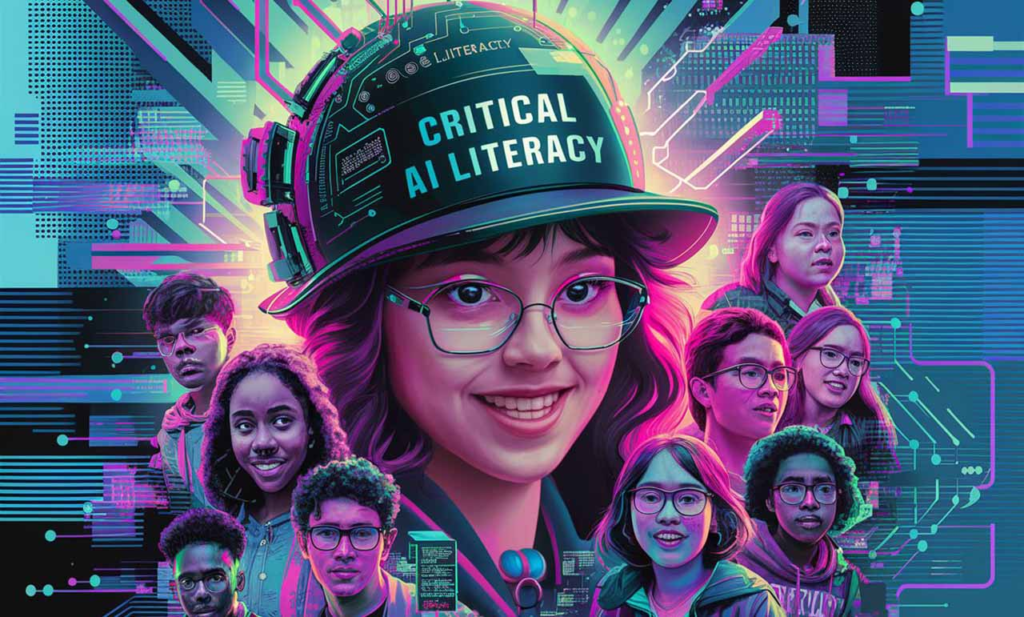Artificial intelligence (AI) is no longer just a buzzword for tech experts. AI is becoming part of our everyday lives — from how we shop and communicate to how we work and learn. Because of this rapid change, the federal government is pushing to bring AI literacy In schools. This means preparing students for a future where AI technology will be important in society and the workforce.
This article explains what AI literacy means, why it is important, how the federal government is supporting AI education, and what it means for students, teachers, and parents. If you want to understand how schools are adapting to the AI revolution, keep reading.
What is AI Literacy in Schools?
AI literacy is the ability to understand and use artificial intelligence technology. It includes more than just knowing how to use AI-powered tools like voice assistants or recommendation systems. AI literacy teaches students how AI works, the ethical issues it raises, how to use AI tools responsibly, and even the basics of creating AI programs.
In schools, AI literacy means adding these topics to lessons so students become informed and responsible users of AI technology, rather than just passive consumers.

Why Is AI Literacy in Schools Important?
AI technology is changing jobs, communication, and decision-making. Here are some reasons why teaching AI literacy in schools is so important:
- Preparing students for future jobs
Many fast-growing jobs need knowledge of AI and technology. Teaching AI literacy gives students the skills needed for careers that might not even exist yet. - Building critical thinking
AI affects what we see online and how decisions are made in society. Understanding AI helps students think critically about information and avoid misinformation. - Promoting ethical awareness
AI raises questions about privacy, fairness, and bias. Teaching AI early helps students understand these issues and act responsibly. - Ensuring equity
Without AI education, some students could fall behind. The federal push aims to make AI learning available to all students, no matter their background.
The Federal Push for AI Literacy
The federal government has started several programs to support AI literacy in schools. Here is how the federal push is helping:
Funding and Grants for Schools
The government is providing money to help schools develop AI curriculum and teacher training. This funding allows schools to buy AI technology, train teachers, and start AI clubs or camps.
National AI Education Standards
Work is ongoing to create national standards that define what students should learn about AI at different grade levels. These standards will help teachers and schools design lessons that build AI skills step-by-step.
Partnerships with Tech Companies
The federal government encourages schools to partner with tech companies like Google and Microsoft. These partnerships give schools access to AI software, expert talks, and internship opportunities.
Teacher Training and Resources
Many teachers do not feel ready to teach AI. The government is funding training programs to help teachers learn how to teach AI effectively. Online courses, workshops, and lesson plans are being made available.
How Schools Are Teaching AI Literacy
Schools are using different methods to teach AI literacy at various levels:
Elementary Schools
Young students learn basic ideas about AI, like what it is and where it is found. They may do hands-on activities like teaching a simple AI to recognize pictures.
Middle Schools
Students start learning about data, algorithms, and ethical concerns. They may begin basic coding using AI tools designed for beginners.
High Schools
Older students explore machine learning, AI ethics, and real-world uses. Some schools offer AI electives or include AI projects in science and math classes.
Benefits Beyond the Classroom
Teaching AI literacy has benefits beyond schoolwork:
- Students become innovators who can solve real problems using AI.
- Access to AI education helps close the technology gap between different communities.
- Students learn to use AI tools responsibly in their personal and future professional lives.

Challenges to Overcome
The federal push is promising but there are still challenges:
- Many teachers feel unprepared to teach AI and need ongoing training.
- Some schools, especially in rural or low-income areas, lack resources and technology.
- Developing age-appropriate and engaging AI lessons is difficult because AI is complex.
- AI technology changes quickly, so curriculums need constant updates.
How Parents and Communities Can Help
Parents and communities play an important role in supporting AI literacy:
- Encourage children to explore technology and AI.
- Advocate for AI programs and funding at local schools.
- Engage with school boards about AI curriculum.
- Provide access to AI learning tools at home when possible.
- Discuss AI ethics and responsible use with children.
The Future of AI Literacy in Schools
AI will continue to impact many parts of life, so AI education will only grow in importance. The federal push for AI literacy in schools is a crucial step toward preparing the next generation for a world powered by AI.
By investing in AI education now, we can make sure all students have the chance to succeed in a future where AI plays a big role. Students who learn about AI early will understand both its power and its risks, helping them become responsible and creative users of technology.
Conclusion
AI literacy in schools is essential for preparing students for the future. The federal government’s support through funding, standards, partnerships, and teacher training is helping bring AI education to classrooms across the country.
As students become more knowledgeable about AI, they will be better equipped to contribute to society and use AI tools responsibly. The federal push is transforming education and making sure no student is left behind in the AI age.
If you found this article helpful, consider sharing it to help others understand the importance of AI literacy in schools.
Do Follow USA Glory On Instagram
Read Next – Fed Payments Innovation Conference: Shaping Future Payments






